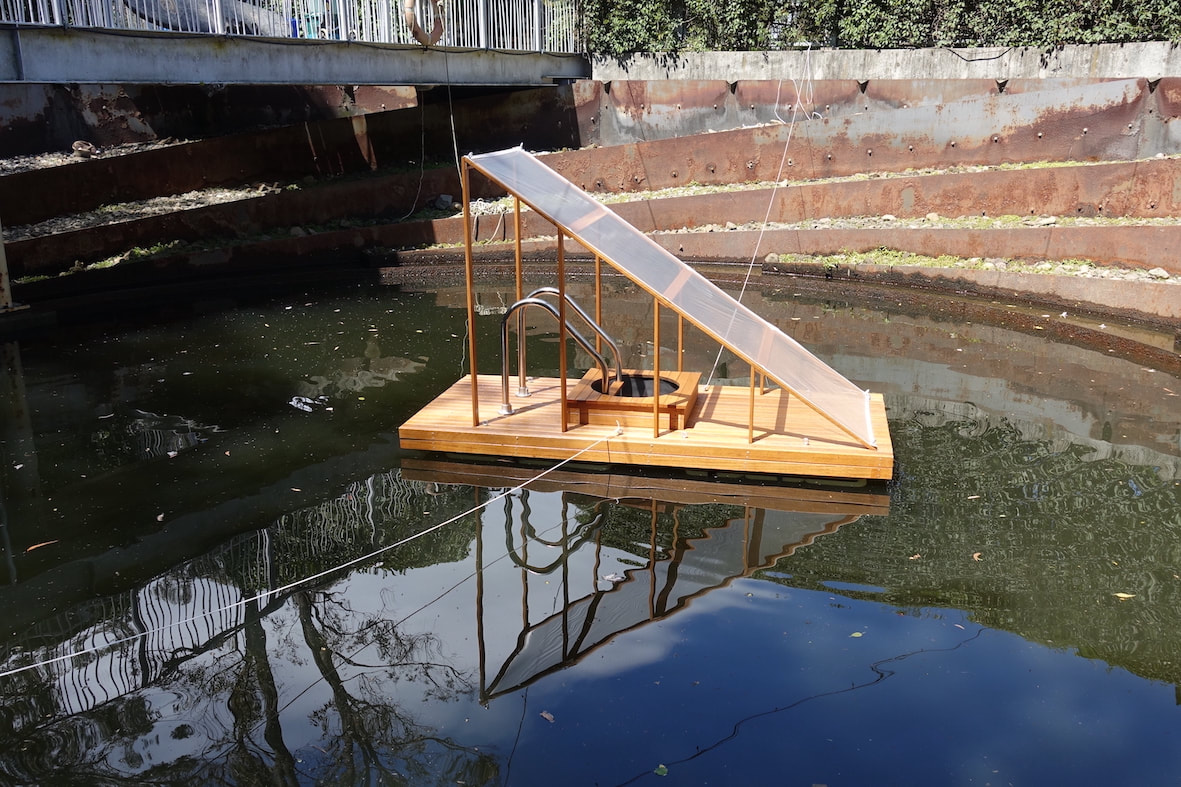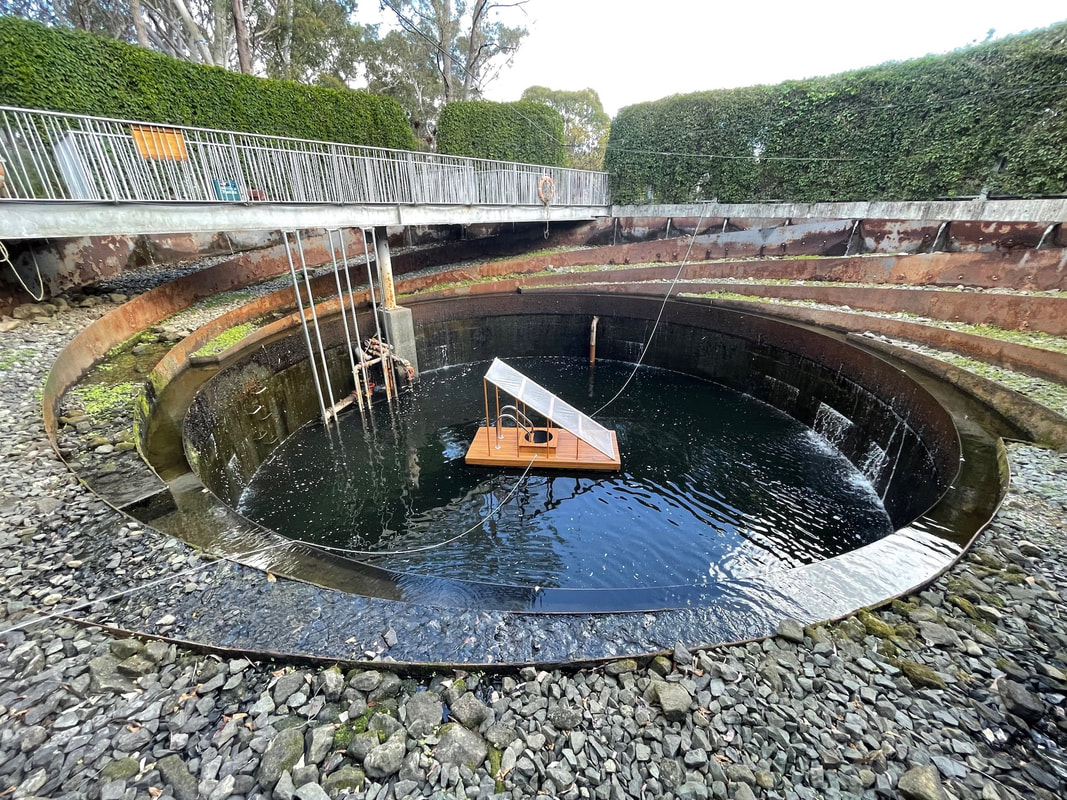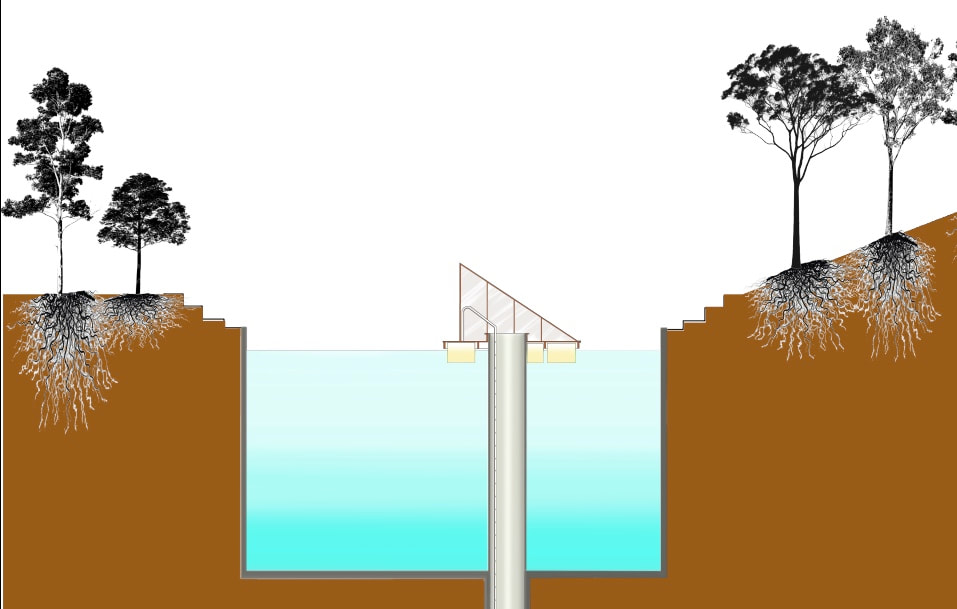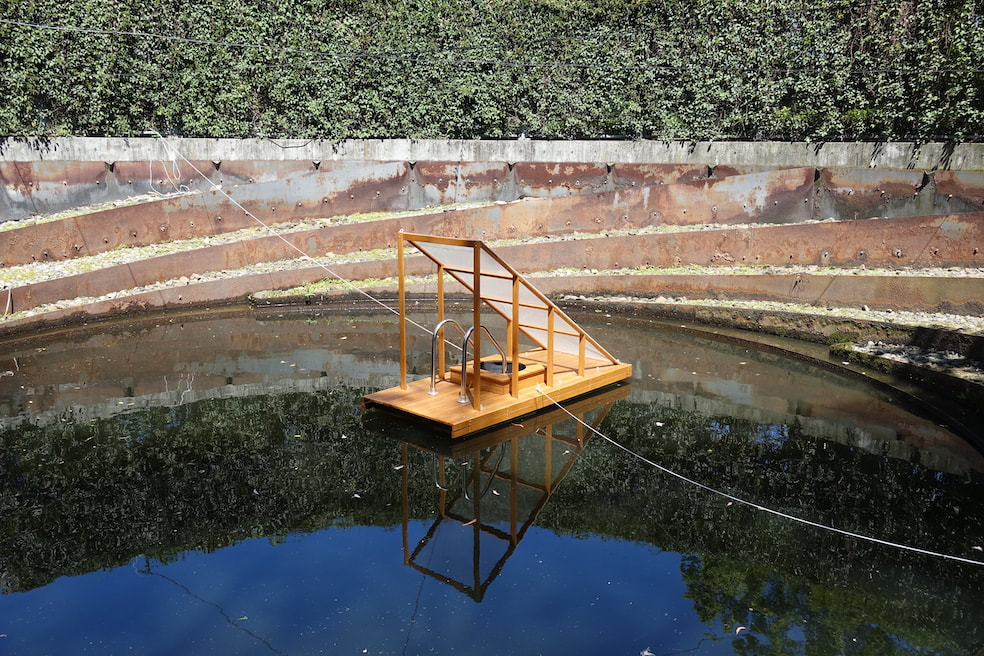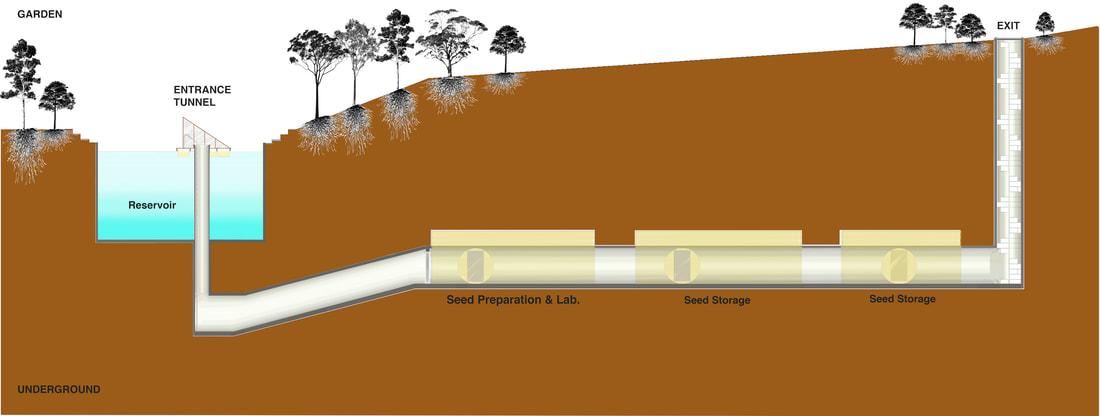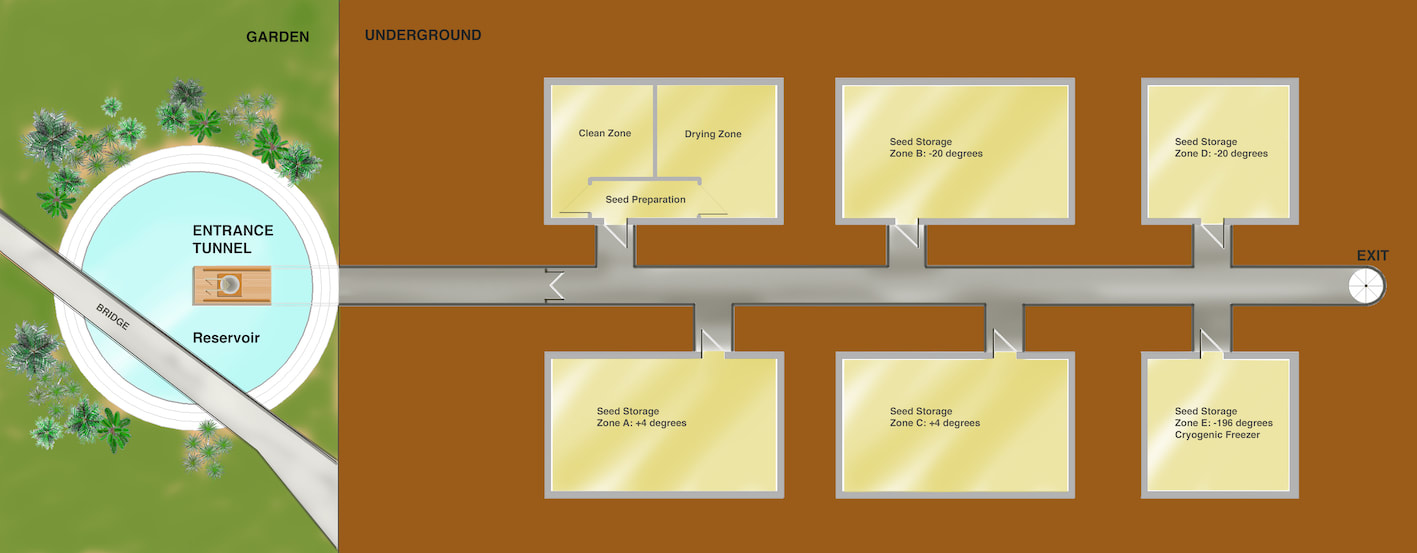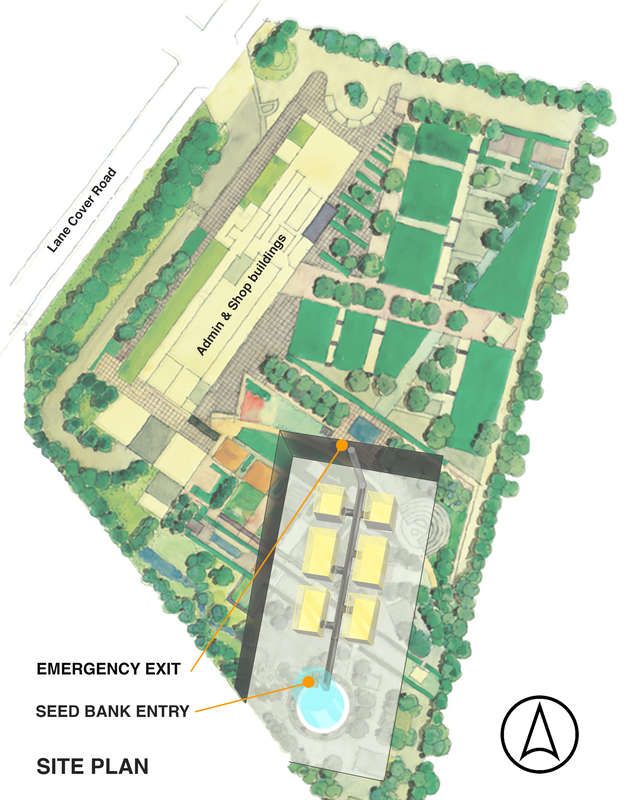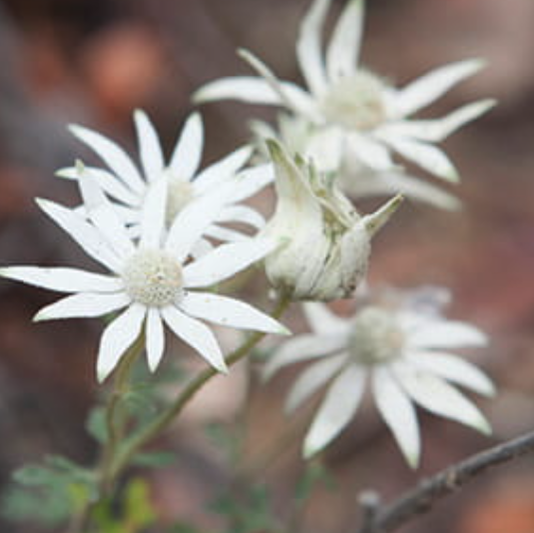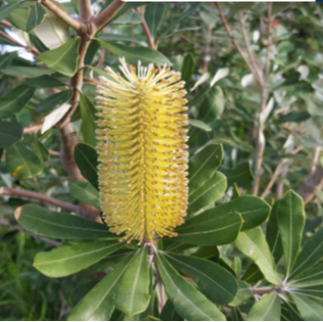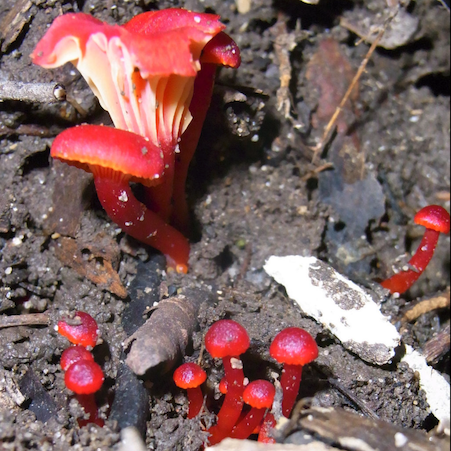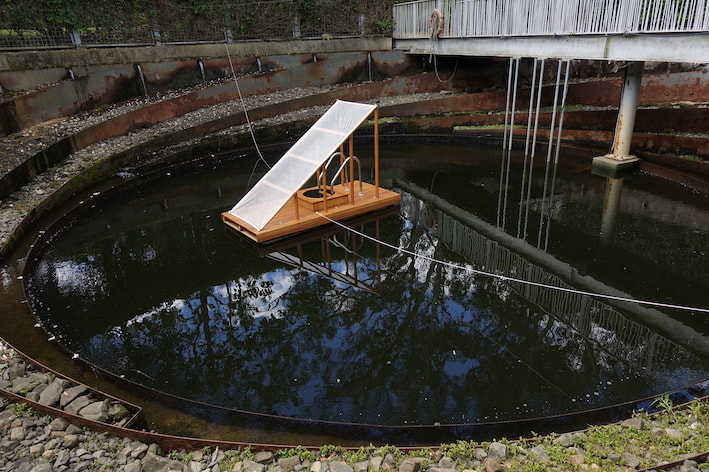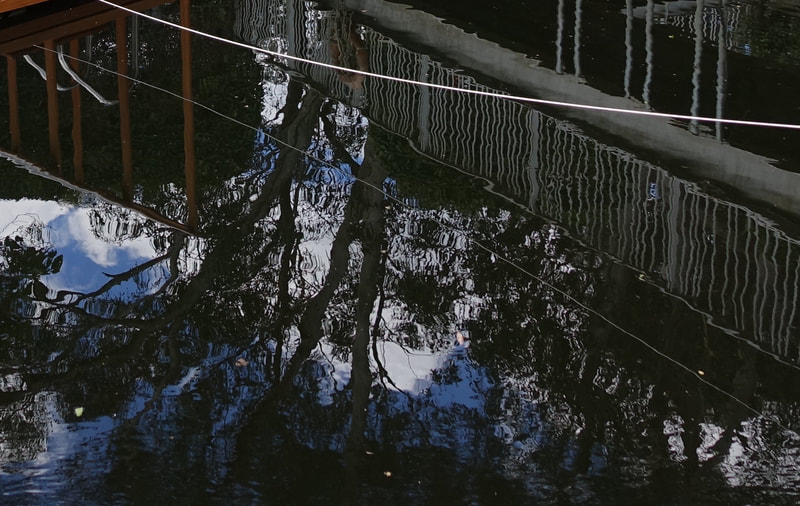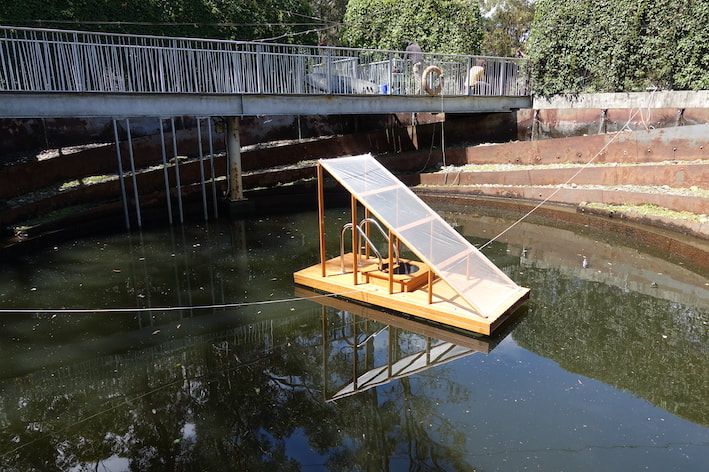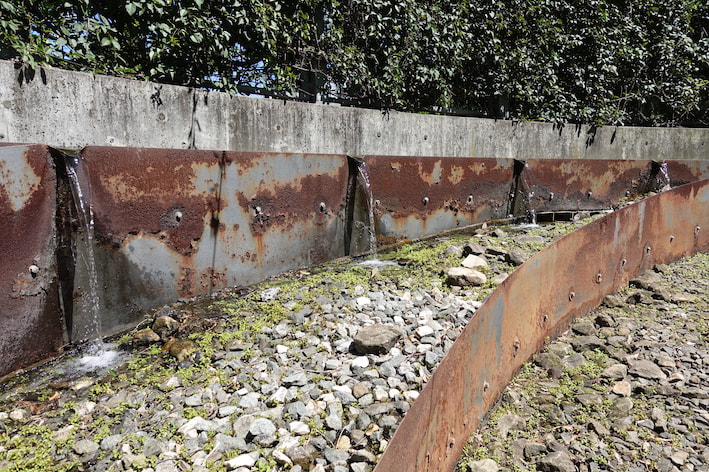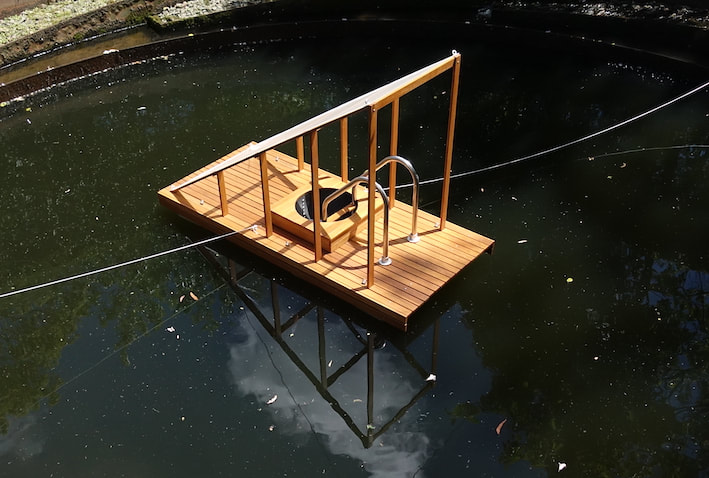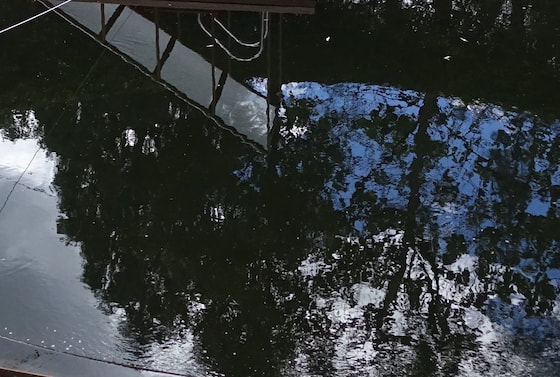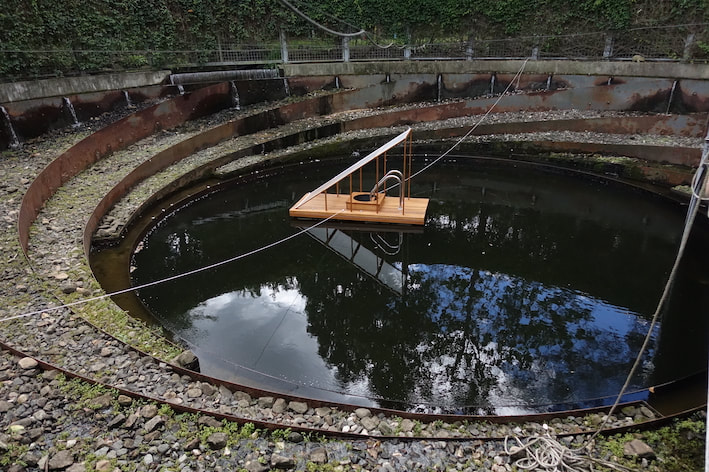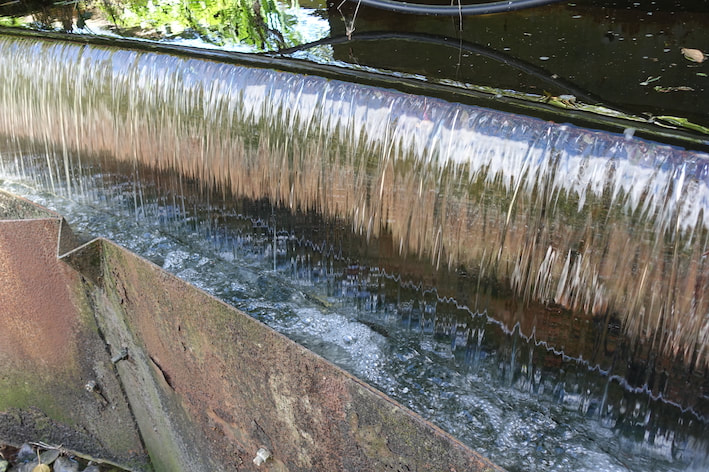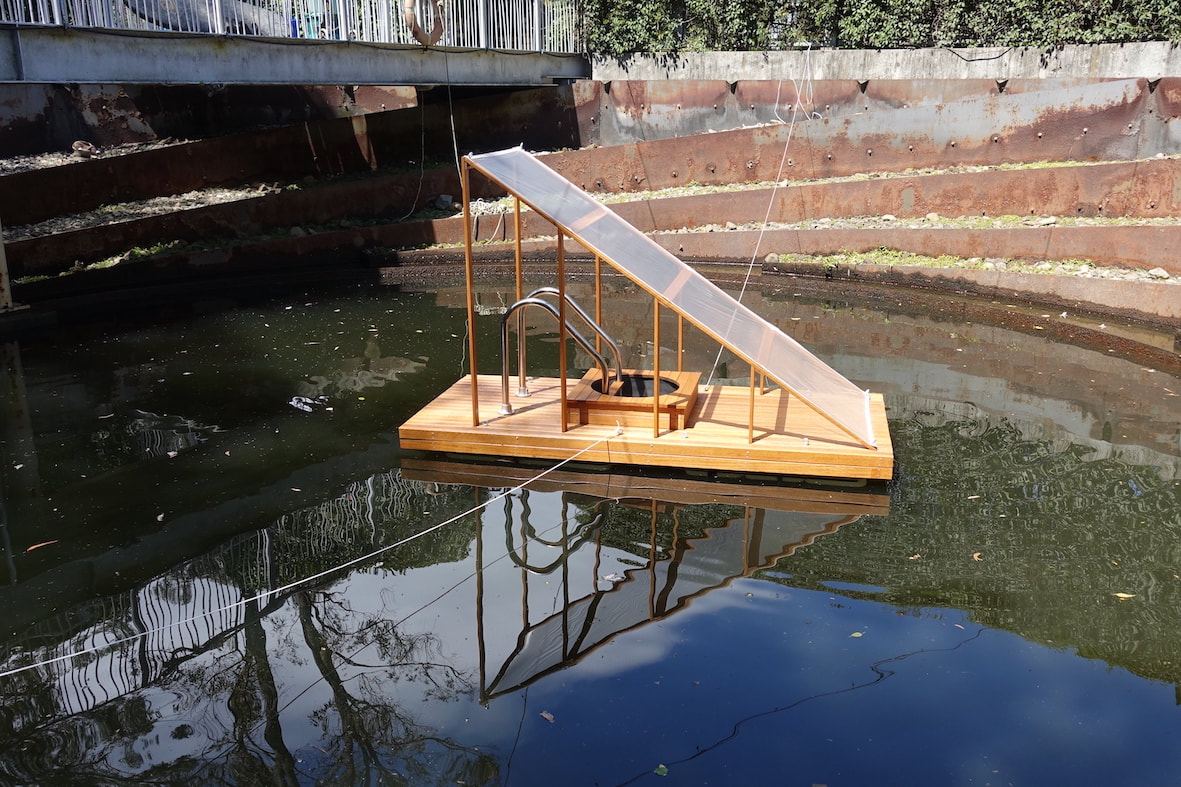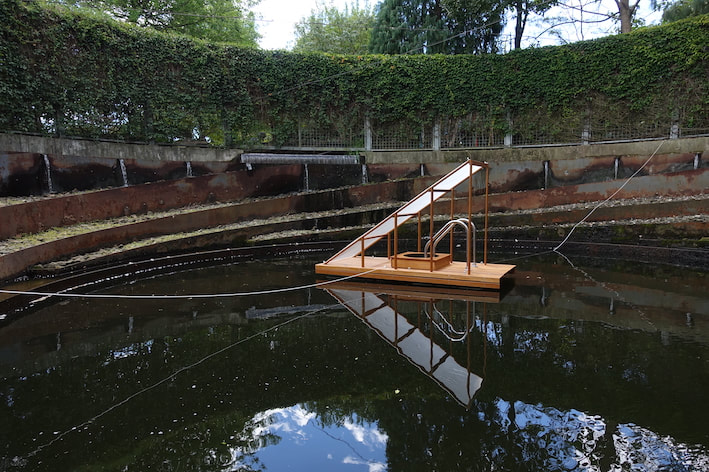Unearthed Seed Bank
Unearthed Seed Bank is located deep below the Eden Gardens and is accessed via the floating platform ladder. It descends vertically through the deep reservoir and into the rock tunnels below. This precarious access is designed to be quickly disconnected when the seed collection is threatened by fire or other catastrophic events.
The secure storage facilities offer a range of temperature controlled zones to suit long term storage of seeds and tissue culture from our most endangered indigenous plant species from Lane Cove National Park region which supports over 625 plant species including 71 trees, 38 orchids and 43 ferns. One third of these species are recorded as locally rare, this means they are represented by less than 5 plants. With 10% of NSW flora at risk of extinction, the balance of our ecosystems is vulnerable to climate change and the impacts of invasive plant species, feral animals, diseases, land clearing, urban development and pollution.
Seed banks offer a backup, like an insurance policy, to protect our Australian plant genetic information against extinction. It is vital to protect Australia's biodiversity to help maintain a healthy natural environment to support our native fauna and human habitats.
This subterraneous seed bank was constructed during the initial Eden Gardens development and finally launched during the Eden Unearthed Exhibition 2021.
The secure storage facilities offer a range of temperature controlled zones to suit long term storage of seeds and tissue culture from our most endangered indigenous plant species from Lane Cove National Park region which supports over 625 plant species including 71 trees, 38 orchids and 43 ferns. One third of these species are recorded as locally rare, this means they are represented by less than 5 plants. With 10% of NSW flora at risk of extinction, the balance of our ecosystems is vulnerable to climate change and the impacts of invasive plant species, feral animals, diseases, land clearing, urban development and pollution.
Seed banks offer a backup, like an insurance policy, to protect our Australian plant genetic information against extinction. It is vital to protect Australia's biodiversity to help maintain a healthy natural environment to support our native fauna and human habitats.
This subterraneous seed bank was constructed during the initial Eden Gardens development and finally launched during the Eden Unearthed Exhibition 2021.
Subterranean Seed Bank: Cross Section
Subterranean Seed Bank: Plan view
Seed Preparation
The Seed Preparation & Laboratory is a sterile zone where new seeds are cleaned, sorted and dried and tissue culture is prepared for long-term storage. Some seeds need to be released from their pods or gum nuts. Careful preparation is vital to ensure the longevity of the seeds. There are 5 storage zones within this seed bank, their temperatures are designed to suit various plant species. Cold Zone 4˚, Very Cold Zone -20˚ and the Cryogenic Freezer -196˚. Some plant species' seeds cannot be stored, for example, some rainforest plants, while others cannot be germinated from seed. The leaf material or cuttings are collected from these plants, propagated in the nursery, or stored as tissue culture in the Cryogenic freezer at -196˚ to secure longevity.
The Seed Preparation & Laboratory is a sterile zone where new seeds are cleaned, sorted and dried and tissue culture is prepared for long-term storage. Some seeds need to be released from their pods or gum nuts. Careful preparation is vital to ensure the longevity of the seeds. There are 5 storage zones within this seed bank, their temperatures are designed to suit various plant species. Cold Zone 4˚, Very Cold Zone -20˚ and the Cryogenic Freezer -196˚. Some plant species' seeds cannot be stored, for example, some rainforest plants, while others cannot be germinated from seed. The leaf material or cuttings are collected from these plants, propagated in the nursery, or stored as tissue culture in the Cryogenic freezer at -196˚ to secure longevity.
Seed Banks
What is a seed bank?A long-term seed storage facility is designed for temperature stability to ensure the security and longevity of seed collections. Their aim is to maintain the botanical diversity of plant species, in particular vulnerable plant varieties that are threatened by extinction. With the increasing impacts of climate change on our ecosystems, both seed and plant tissue protection has become a vital tool in maintaining botanical diversity, thus aiding conservation, restoration and research. Seed banks, often referred to as seed vaults, specialise in various seed types. Some collect regional indigenous plants, while others focus on agricultural seeds to protect crops and help maintain food security. Many seeds have been genetically modified therefore traditional heritage collections are important to preserve. The Eden Garden's focus is on the Australian native species of the Lane Cove National Park area.
|
Why do we need seed banks?Each seed contains all the necessary genetic information to grow into a new plant. By storing seeds this helps to ensure the future survival of threatened plant species and secures their genetic material. It offers a backup to protect against extinction and is a quality source of seed stock for conserving damaged bushland and restoring habits. With 10% of NSW flora at risk of extinction, the balance of our ecosystems is at risk. It is not only climate change that threatens Australia’s plant security, but the impacts of invasive species, feral animals, diseases, land clearing, urban development and pollution. Seed banks offer a backup similar to an insurance policy to protect against the impacts of future devastating events. It is vital to keep Australia's biodiversity protected while maintaining and supporting the native fauna habitats thus retaining a healthy environment for humans.
|
Threats to Lane Cove National ParkOwing to the close proximity of industrial properties and residential areas to the boundaries of the Lane Cove NP, these bushland areas are under increasing pressure to survive. The bush reserves support numerous waterways fed by increasing urban stormwater and garden runoff, carrying seeds of invasive species and excess nutrients, illegal rubbish dumping, rock removal, and impacts of pets and feral animals. These destabilise the natural water courses causing increasing groundwater levels and nutrient pollution which encourages invasive species to thrive including Lantana, Privet, Morning Glory, Ballon Vine, Asthma Weed, Tradescantia, Turkey Rhubarb, Cassia and Camphor Laurel trees.
These species quickly multiply creating their own monoculture, choking and killing the native plants. Cool burn fires would aid in the survival of the indigenous plants and the germination of their seeds, however, these are not feasible in the city location. Ongoing bushland clearance for agriculture and urban development, plus the recent extreme bushfires of 2019-20, has increased pressure on secure habitats for indigenous animals; urban National Parks are fast becoming biodiversity repositories for these displaced fauna. |
Lane Cove National ParkThe bushland corridors of the NP line the gullies and ridges separating various northern Sydney suburbs. They support around 620 indigenous plant species including 71 trees, 38 orchids and 43 ferns. One third of these species are documented as 'locally rare'; the definition of 'locally rare' is less than 5 of an individual species in existence within that local geographical boundary. These include wet and dry sclerophyll forests, heathland, mangroves, tidal flats and a diverse range of indigenous fauna. The park also supports 124 native bird species, 5 mammals, 19 reptiles, at least 4 species of frogs, multiple insects, plus other organisms that inhabit the park and rely on the security of the biodiversity of their habitat.
Why are these national parks important for Sydney residents?These precious bush remnants are vital for maintaining city air quality and offer Sydney residents access to bush recreation. Although NPs' primary purpose is the protection and conservation of the surrounding natural biodiversity and cultural sites, urban NPs are particularly valuable for both the physical and mental well-being of residents. They also offer safe bush corridors for fauna migration through the city.
|
Vulnerable Species in Lane Cove National Park
There are six endangered ecological vegetation communities that are listed in the Threatened Species Conservation Act 1995 in the Lane Cove National Park Region. Blue Gum High Forest, Sydney Turpentine Ironbark Forest and Hygrocybeae Fungi are listed as Critically Endangered under the Commonwealth Environmental Protection and Biodiversity conservation Act 1999.
For more information visit: Lane Cove Council Lane Cove Council Report Link
Want to help preserve your local bushland visit: Friends of Lane Cove NP
For more information visit: Lane Cove Council Lane Cove Council Report Link
Want to help preserve your local bushland visit: Friends of Lane Cove NP
I would like to acknowledge that this art intervention has been created on the traditional lands of the Darug Wallamatta People and pay my respect to Elders both past, present and future.
